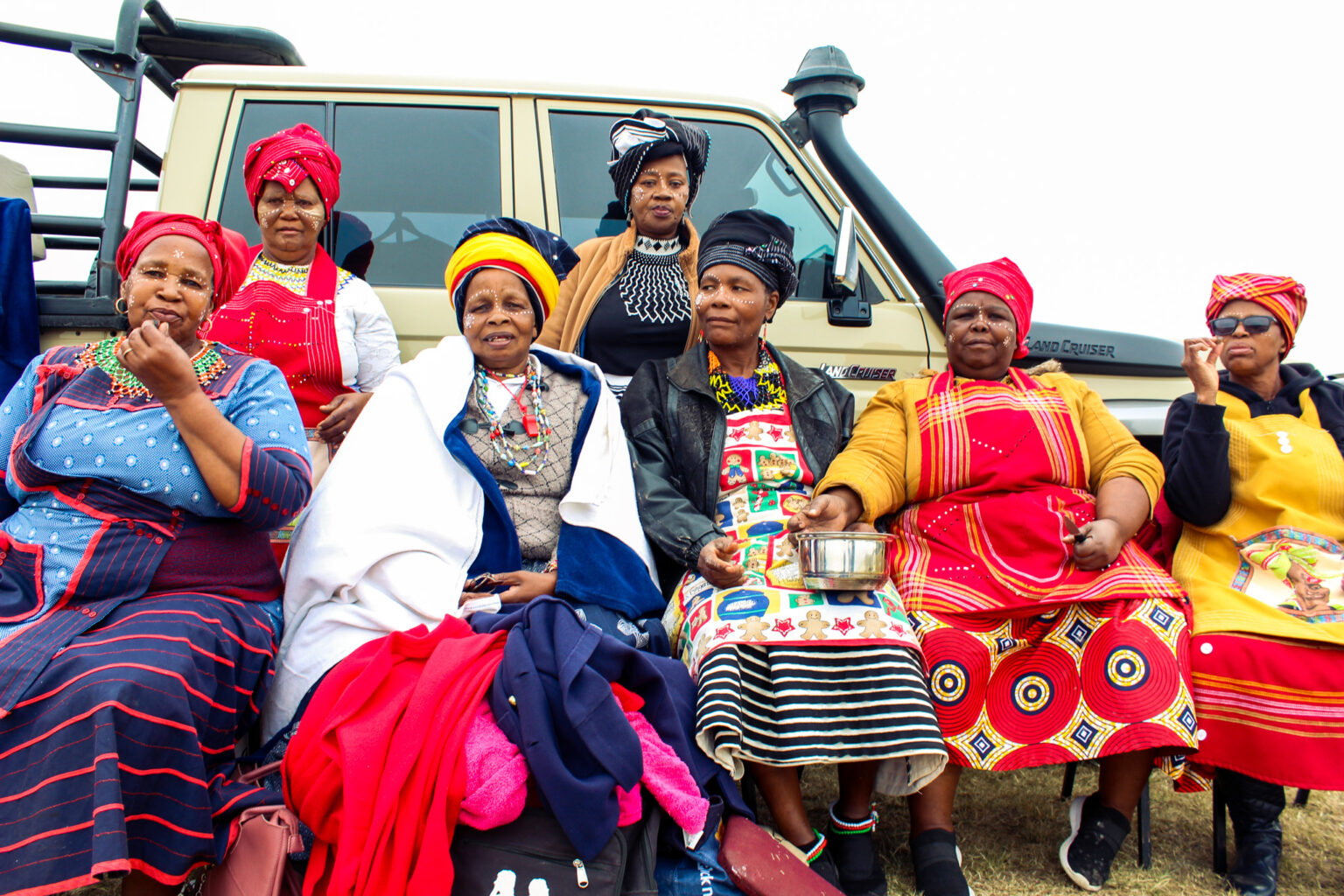By ‘Odidi Matai-Sigudla, Buhle Andisiwe Made and Fahdia Msaka
On 22 April, a commemoration was held of the Battle of Grahamstown, where 10 000 amaXhosa warriors under Chief Ndlambe, led by Makhanda ka Nxele (who the town is named after), fought the British colonisers on 22 April 1819 at eGazini.
Members of the AmaRharhabe Kingdom – the descendants of Makhanda, also known as Makana – local politicians, and community members attended the event.
As with any historic event in South Africa, the story of the Battle of Grahamstown has been told from a colonial perspective. “It is important that people know what our story is about. And when we talk about our story of the Battle of Grahamstown, that we don’t talk about it over there (to other people), it is important for school kids to know the history of their ancestors. Because ubuwena buqala apho – for your future, you need to know where you come from,” said Makana’s Mayor Yandiswa Vara.
Photo: Steven Lang.
ANC Ward Two councillor Ramie Xonxa spoke of how the Xhosa Warriors, who were carrying spears, were met for the first time with live ammunition at the Battle of Grahamstown. “The settlers shot until gunpowder finished. When it finished, a white lady called Elizabeth Salt came forward carrying something that looked like a child in her arms. Now, AmaXhosa were people who didn’t fight women, and they didn’t fight with children. But it wasn’t a child. It was gunpowder. She came with it and gave it to the Settlers, and they continued to shoot their cannons azizgedo (to the point that they massacred) the amaXhosa Warriors. That is why we say we can’t not remember this day,” said Xonxa.
Photo: Steven Lang.
Bongani Diko, the Secretary of Amabhuto amaXhosa, spoke about the programmes supported by Amabhuto amaXhosa that are available to cultivate the history of Makhandans. For example, Bhohli Nqakha, a member of Amabhuto amaXhosa, teaches children the traditional values she has learned from Amabhuto amaXhosa and drama lessons.
Nomhle Gaga, the Sarah Baartman District Municipality spokesperson, spoke at length about the decolonization of history at schools. “You are told by our mouths and see it yourselves with your eyes that when we called our municipality Sarah Baartman, we didn’t make a mistake. Sarah Baartman was the first woman here in South Africa who was taken into human trafficking. After her death, her body was cut into pieces and showcased (across Europe). That’s how much we were tortured. We are not celebrating here. We are remembering. A celebration is when you are having a party and are happy. We are not happy about the deaths of Makana. We are not happy about the way Sarah died,” said Gaga.
The bones and beads of the amaXhosa warriors who fought in the Battle of Grahamstown are still missing. “Beads, they don’t die. Beads tell the story,” said Diko, stating that beads are important in Xhosa culture because different colours and beading prints signify tribes and statures among the Xhosa people. The beads are just as important as the lives lost in 1819. That part of history remains a mystery, leaving an open wound for the descendants of the warriors, leaving them without closure, the speakers added.
The significance of the bones and beads remains a delicate issue because when a person of the Xhosa community or rather tribe passes, the Ukukhapha (send-off) ceremony is supposed to be held, where the family speaks to the spirit in a manner as to appease them and assure them of their new spiritual journey. Without human remains, this ceremony cannot happen. Ukukhapha is performed by slaughtering a cow and the spiritual branch – Ihlamvu.
The municipality said there was no reenactment of the Battle of Grahamstown this year because of a lack of funding. However, the successful event was informative and highlighted why the preservation of culture is significant for future generations.


